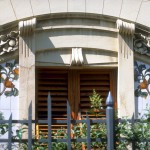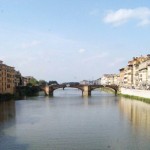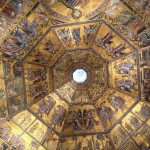Feasting on Florence for free
Enjoy the city of lilies and the birthplace of the Renaissance
Florence is a never-ending feast for a traveler. No matter how long one is here or how many times one visits there is always something delicious to do! I met all my sightseeing goals this trip and wanted to continue to get to know the city. So I began searching for fabulous things to do for free. The museums here are all reasonably priced and some – such as the Museo di San Marco, the Santa Croce and Santa Maria Novella Complexes, the combined Boboli and Bardini Gardens tickets – offer access to an astonishing amount of beauty and art for a very small fee.
-
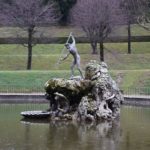
-
Palazzo Pitti – Boboli Gardens – Neptune Fountain
-
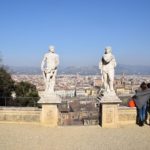
-
Bardini Gardens – Lovers enjoying the view of Florence from the veranda of the old Villa Bardini which is now a museum
-
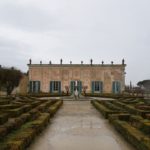
-
Palazzo Pitti – Boboli Gardens – the Ceramic Museum
But still – as a solo traveler who must pay full price for accommodations and who forgoes hotels and eating out for an airbnb.com apartment and cooking to make travel affordable and, hence, possible – freebies are a welcome relief to my skinny wallet! So, here is a varied menu of free things to do in Florence.
Walk around
Figure out how far you can comfortably walk. Don’t forget that cobblestones are unforgiving – and uneven – walking material. Wear flat, thick-soled, cushioned shoes. Being young will not save you from sore feet and tender hamstrings here! Put your map in your bag and go. I figure walks in hours rather than miles. I am an all day walker and because I usually travel off-season I have to take into account shorter days. In winter I have about eight good daylight hours for walking with picture-taking. Of course the city is well-lit and lively so walking at night is great too!
-
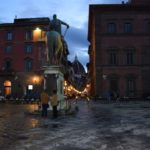
-
Piazza Annunziata – view ot the cupola of the Duomo
-
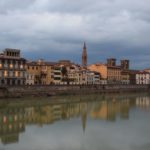
-
View of the Arno River at dusk
-
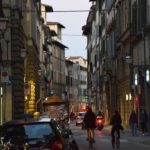
-
A typical Florentine street at dusk!
You are never far from the river in Florence. If you lose your way – find the river and find home. Some great walks: Piazzale Michelangelo and the courtyard of San Miniato for fabulous views of the city; Parco delle Cascine for a great walk along the river to the 395 acre park; Porta Romana just cross the Ponte Vecchio and wander up Via Romana (the road to Siena and Rome) through a great old neighborhood to see the 14th-century walls and city gate and in the piazza – a really interesting modern sculpture by Michelangelo Pistoletto.
-
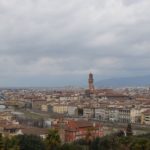
-
View of Florence from the courtyard of Chiesa di San Miniato al Monte
-
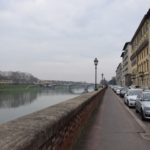
-
Walking along the Arno River to the Parco Cascine
-
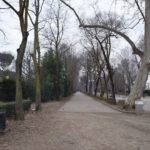
-
Parco Cascine
“Mercatos” (i.e. street markets)
Go to the fabulous markets: Mercato San Ambrogio, Mercato Nuovo, Mercato Centrale, Mercato San Lorenzo, Mercato La Cascine, Mercato Santo Spirito, all offer walks to different parts of the city and feature very reasonably priced vegetables, fruits, meats, dry goods and flea market items. The many vendors sell EVERYTHING and the prices are fabulous – better than the stores!
-
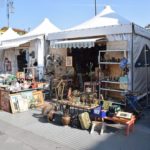
-
Mercato San Ambrogio – the outdoor flea market
-
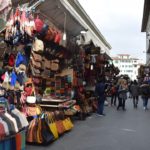
-
Mercato San Lorenzo – a fabulous leather goods market
-
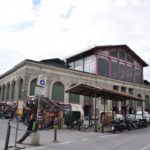
-
Mercato Centrale – entrance to the large 2-story market
Traditional lunch foods are also offered such as the very Florentine Lampredotto, a “panino” made of cow’s stomach simmered for hours in vegetable broth and served on a soft bun with a special salsa verde and hot sauce. The sandwich is delicious! Many of the markets are open daily and the Mercato Centrale has a huge second floor open all day until midnight with many different restaurants and bars to choose from – and great ambiance! The first floor is markets and the second floor is all restaurants and cafes and a cooking school. Outside on the surrounding streets vendors sell fabulous leather goods for reasonable prices. (In general, the leather is imported from South America and the goods are manufactured in Italy).
Churches
Churches are literally free art museums with paintings, frescoes, and sculptures as well as ancient architecture that can feature pagan symbology that reflects the origins of the city and the merging of Christianity with the local religions. You can enjoy art and artifacts from the ancient Roman to the Medieval to the Renaissance to the very modern, often all in one chiesa! The Basilica di San Miniato al Monte is one such church. It is across the Arno and sits on top of a hill behind the Piazzale Michelangelo. It offers modern artwork mixed with frescoes from its 8th-century beginning!
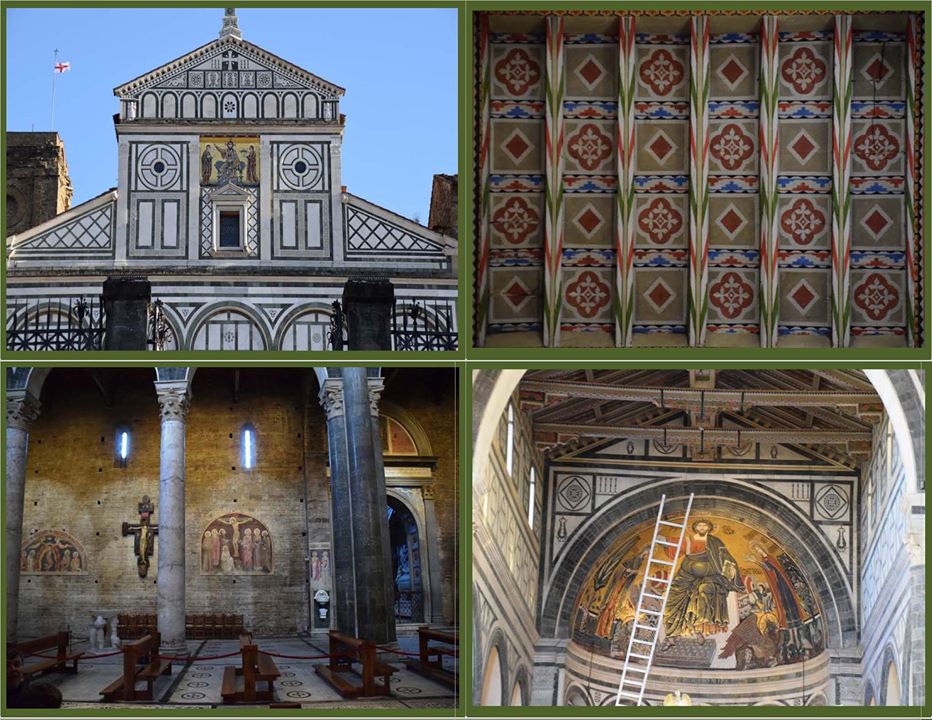
Basilica di San Miniato al Monte
The church was built in 783 AD. It is on top of a steep hill and, hence, the name – al Monte – to the mountain. Images clockwise from the top left: The beautiful geometrical, marble façade is from the 1048 AD. The wood ceiling is colorful and breathtaking. The large front altar apse mosaic is from the 13th-century. The ladder is a modern sculptural addition and symbolizes the climb from earth to heaven. The walls hold ancient frescoes and the large crucifix is from the 11th-century and has miracles attributed to it.
Most churches allow photos. Two that are free but do not are Santo Spirito (photos only in the cloister which costs 2 Euro to access) and Santa Trinità – don’t even try – the “no photos” zealot monks will have you excommunicated! I actually stole a photo here when the monk went through a door that closed. But I swear he knew I took it because he headed straight for me when he got back. I got many more photos in Santo Spirito – there is only one watcher and the church is huge! However, just because I am a rule-breaker does not mean that I advocate it for others. I just dislike being invited to a feast and being the only one at the table. A photo to me is a shared “meal”!
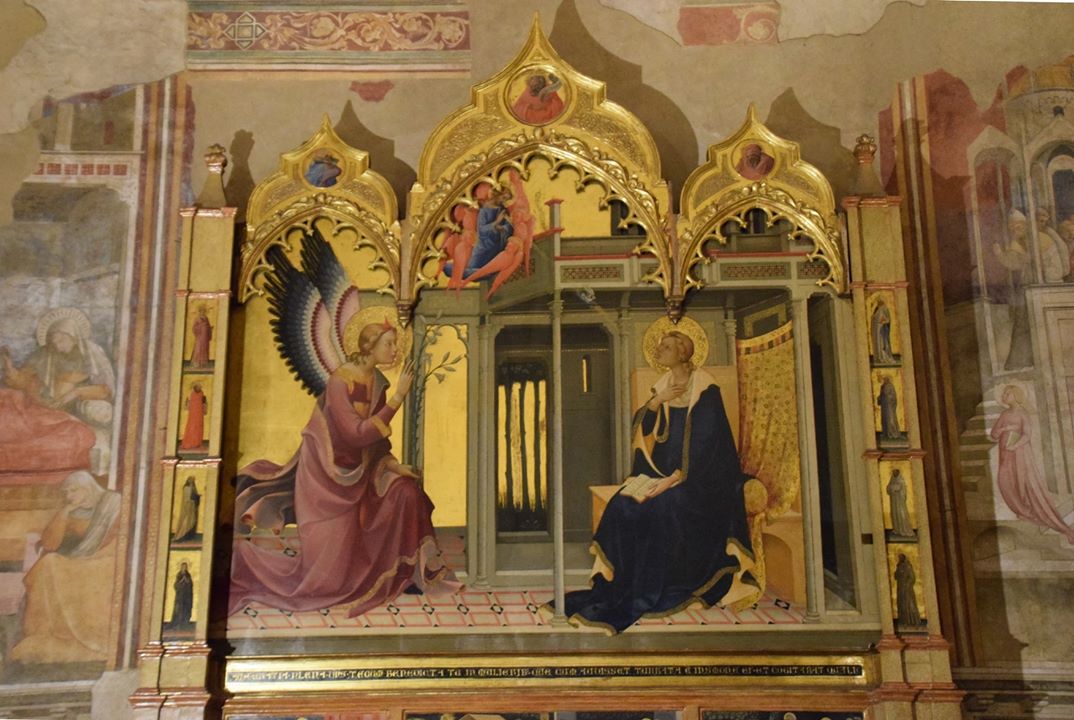
The Basilica di Santa Trinita was founded in 1250 and it is filled with astonishing Gothic art
The 13th-century Basilica di Santa Trinità sits next to the Arno River at the end of the bridge of the same name. It is just one bridge north of the Ponte Vecchio. After enjoying its architecture and artwork – and the sacred calm and peace of the interior – one can enjoy a stroll in its beautiful neighborhood. Santa Trinità faces the great Column of Justice – an ancient Roman column given to Cosimo I de’ Medici by Pope Pius IV in 1561. A walk along the Via di Tornabuoni from Piazza Santa Trinità to the Piazza delle Repubblica is a window shoppers treat and you will find designer boutiques such as Balenciaga, Gucci, and Ferragamo, jewelers such as Bulgari and Damiani, fabulous restaurants and cafes, a 13th-century tower, and an incredible sixteen palazzos!
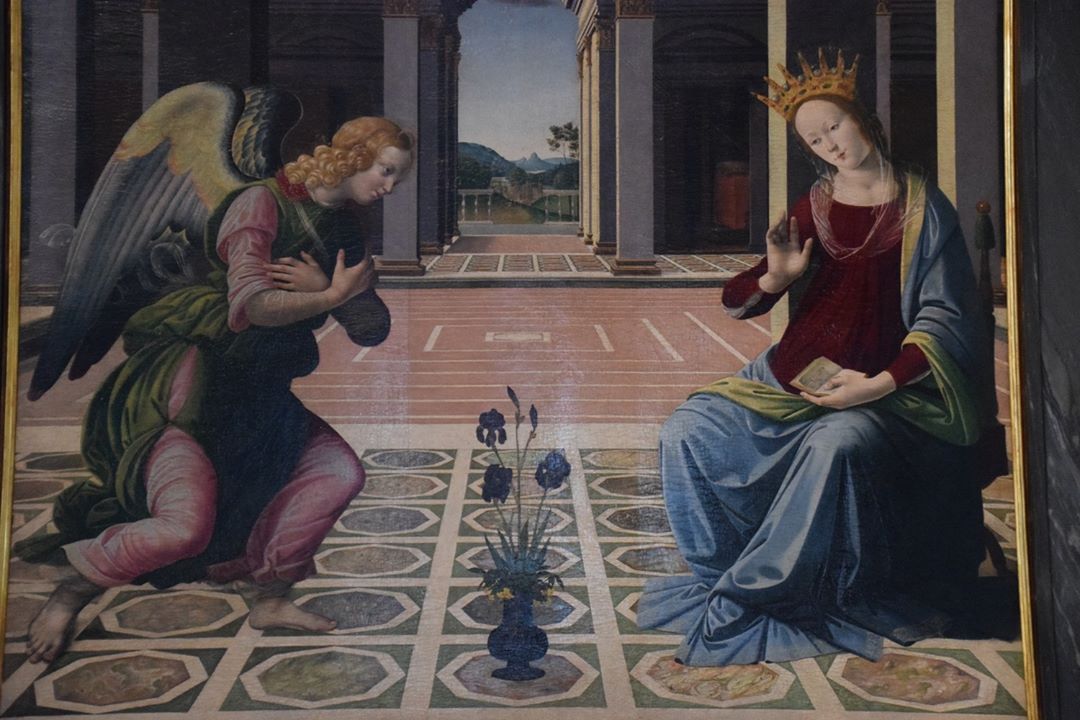
Basilica di Santo Spirito, the Cappella Frescobaldi – The Annunciation painted in 1498 by Pietro Donzello. Another ‘stolen’ photo!
The Piazza Santo Spirito offers a daily mercato as well as funky scenes with students, street performers, and locals who frequent the steps of the basilica for lunch and a respite. This is a neighborhood with a lively night life too.
Chill out in a piazza
Sit in a big piazza and enjoy the street performers and the sights and sounds of the people. The city has street performers, musicians, puppeteers, “frozen statue” people, chalk artists everywhere. Florence rings with different languages – eclectic fashionistas – young and old lovers holding hands and kissing everywhere and the melodies of the languages of the world. It is nice to just sit and listen and watch.
The Piazza di Santa Maria Novella is large and park-like and right behind the main train station of Florence. It is lined with shops and feisty street art on the sides of buildings. This is a popular place for youth to sit and talk with friends. The Piazza della Signoria is the main square in Florence and it is here that one finds the Palazzo Vecchio (the town hall) and the adjacent Uffizi Gallery. A copy of Michelangelo’s 17-foot tall David is here too – the original having been moved to the Galleria dell’Accademia in 1873. A popular place to sit are the steps of the Loggia dei Lanzi. This covered courtyard houses many larger than life sculptures of mythological heroes and the long-dead Florentine mighty. Here one, also, finds the Fontana del Nettuno – the Neptune Fountain. It was designed in 1559 by Baccio Bandinelli (1488-1560) who won the contest sponsored by Cosimo I de’ Medici to celebrate the aqueduct being built which would bring water to all of Florence.
-
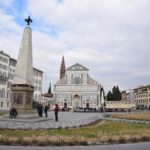
-
Piazza di Santa Maria Novella
-
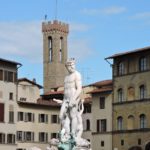
-
Piazza della Signoria – the Neptue Fountain.
-
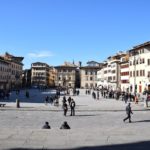
-
Piazza Santa Croce – the view of the square from the steps of the Basilica
Piazza Santa Croce is large and expansive and bordered by shops and restaurants. Adjacent to the basilica is the Scuola di Cuoio – the famed leather school begun post-WWII to offer war orphans a trade. To get to the school which is open daily during traditional Italian business hours, face the Basilica and go to the left, down the small side street. The school is adjacent to the church on Via S. Giuseppe, 5R. Entry to the shops and old school where you can watch leather-makers ply their craft is free. The shop offers many types of leather goods, all handmade by the students and artisans. There is an entire room dedicated to tourists with limited budgets and each piece is stamped with the school trademark. Everything here is exquisite and well worth the price. This is like going to a leather art museum, everything is beautiful.
“Affreschi di Cenacoli” (i.e. Last Supper frescoes)
Go visit some of the wonderful
Last Supper frescoes and enjoy a walking tour of Florence as you traverse the ancient city to get to them. There are many since the theme was the common one for the dining halls of the monks. A Last Supper fresco is called
‘cenacolo’ which comes from the Latin
‘cenaculum’ and means place where you eat – eating room. Officially the wall painting or fresco is a
Last Supper (L’Ultima Cena) and depicts Jesus and his 12 apostles, sometimes with only eleven of them named leaving Judas the betrayer of Jesus in the painting but unnamed. Most refectories – the room where monks ate – have a
cenacolo on one wall.
There are seven truly grand Cenacoli in Florence that are intact originals or restored originals. Five are easy to see, one is only open one day a month and the other, privately owned by a convention center, is difficult to access. Keep in mind that Last Supper frescoes generally decorated the dining hall in monasteries and convents, the refectory. Hence, they are often in buildings not attached the churches associated with them. Here are some photos and addresses of the ones I had the pleasure and privilege of seeing! Because I did not see all the ‘free’ Last Suppers, I included the three Last Suppers that I paid a fee to see. The visits were well worth the small fees I paid.
San Salvi (address: Via San Salvi, 16): This Last Supper is free and easy to find if one knows the address since it is not immediate to the church and the old refectory building is now a museum that sits well behind a wall with an entrance gate that has no large or vibrant signage. About a 30 minute walk from the Duomo in an obscure residential area that requires one to walk through a ‘tunnel’ under the train tracks. Bring a map! Painted between 1511-1527 by Andrea del Sarto (1486-1530).
Santo Spirito, accessed from inside the church. To see it one must pay 2 Euro since the refectory is in the large cloister that adjoins the sanctuary where Michelangelo’s carved lime-wood crucifix hangs. The small cost is worth the magnificent Christ on the cross that Michelangelo offered to the church when he was a mere 17 years old in exchange for allowing him to study the anatomy of the dead there before they were buried. Please note that no photos are allowed of the Michelangelo crucifix – or of anything inside the church. However, on my first visit to the church the crucifix was being guarded by an elderly priest and ancient female parishioner who was busily crocheting small gifts for visitors to buy. The two sat outside the sanctuary chatting and simply ignored or did not hear the shutter of my camera.
-
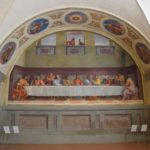
-
Museum of the Last Supper of Andrea del Sarto
-
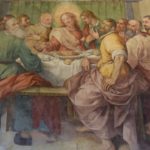
-
New refectory of the Basilica di Santo Spirito
-
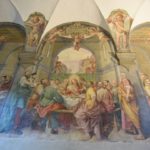
-
New refectory of the Basilica di Santo Spirito
The Basilica di Santo Spirito is an Oltrarno location and it is right over the Santa Trinita bridge – one bridge down from the Ponte Vecchio. Walk straight over the bridge and keep going. A sign will point to a right turn, Or walk to the Pitti Palace and immediately across from the main entrance take a right down SDRUCCIOLO DE PITTI. Walk straight about two blocks to the church. This Last Supper is in the new refectory found inside the internal cloister. The room is bright with sunlight, very narrow and long, and the painting located high up on the wall making the fresco difficult to photograph without – or even with – a wide-angle lens. The artist Bernadino Poccetti (1548-1612) painted the Tre Cena or Three Suppers here in 1597. The suppers depicted are the Wedding at Cana, the Last Supper, and Supper at Emmaus. This is my best complete shot of the fabulous painting and a detail with just the Last Supper.
Santa Croce. The breathtaking Santa Croce refectory with its Last Supper is easily accessed by visiting the church complex which requires an entry fee of 8 Euro. This is a truly reasonable price to pay to spend a day in this huge complex with crypt, tombs of the famous, museum, and church with 16 frescoed chapels. Access to the famous associated Leather School – the Scuola del Cuoio – is free. The Last Supper fresco is in the refectory and is painted underneath the Tree of Life fresco. I was so awe-struck by the Tree of Life that I almost missed the Last Supper painted beneath it! Painted in 1333 by Taddeo Gaddi (1336-1366)
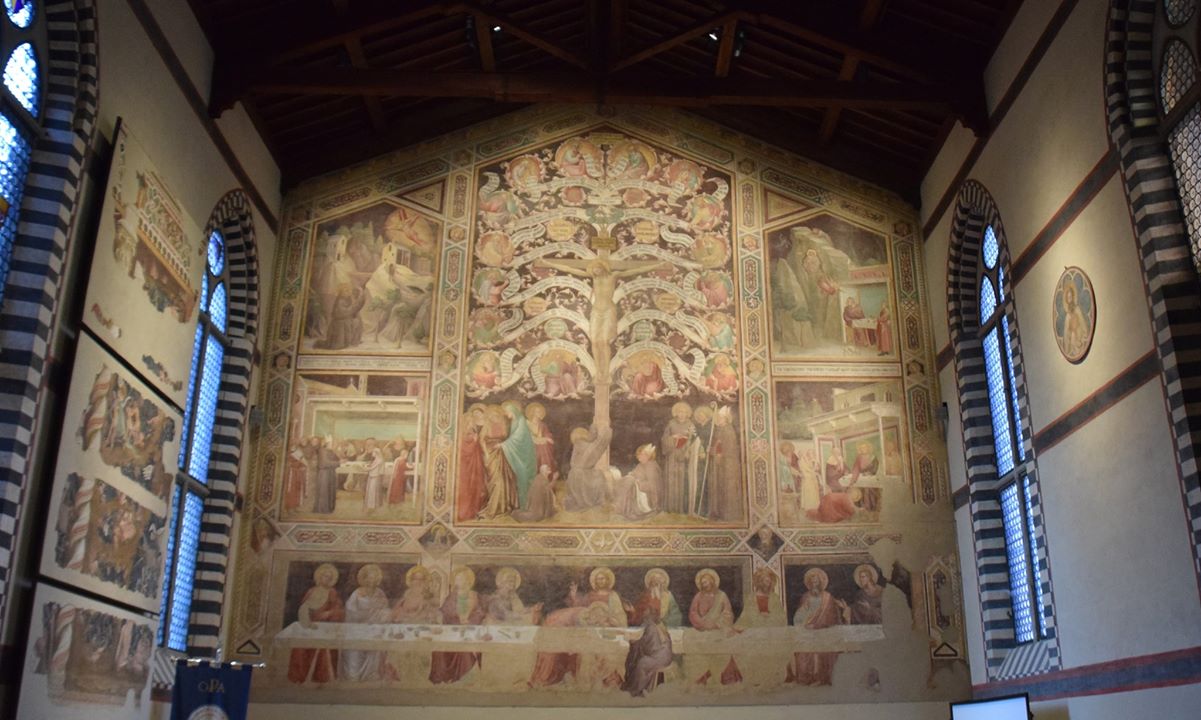
Santa Croce – the tree depicting Jesus’ lineage
Sant’Apollonia. Access to the fresco is free and available every day from 8:15 am-1:50 pm. The refectory with its Last Supper is very easy to find. On your map look for Via XXVII Aprile, 1. An address with a Roman numeral is spelled out on the map legend (i.e. XXVII means 27). This is a 10-minute walk from the Duomo . Painted in 1447 by Andrea del Castagno (1423-1457). Saint Apollonia is the saint who was tortured by having all her teeth smashed and pulled out. Apollonia was a Coptic Christian and a deaconess of the church. After her torture she was to be humiliated and then burned to death. When the guards released her arms she leapt into the fire immolating herself. A gruesome end for sure! She was born in Alexandria, Egypt in the second century and died in 249AD.
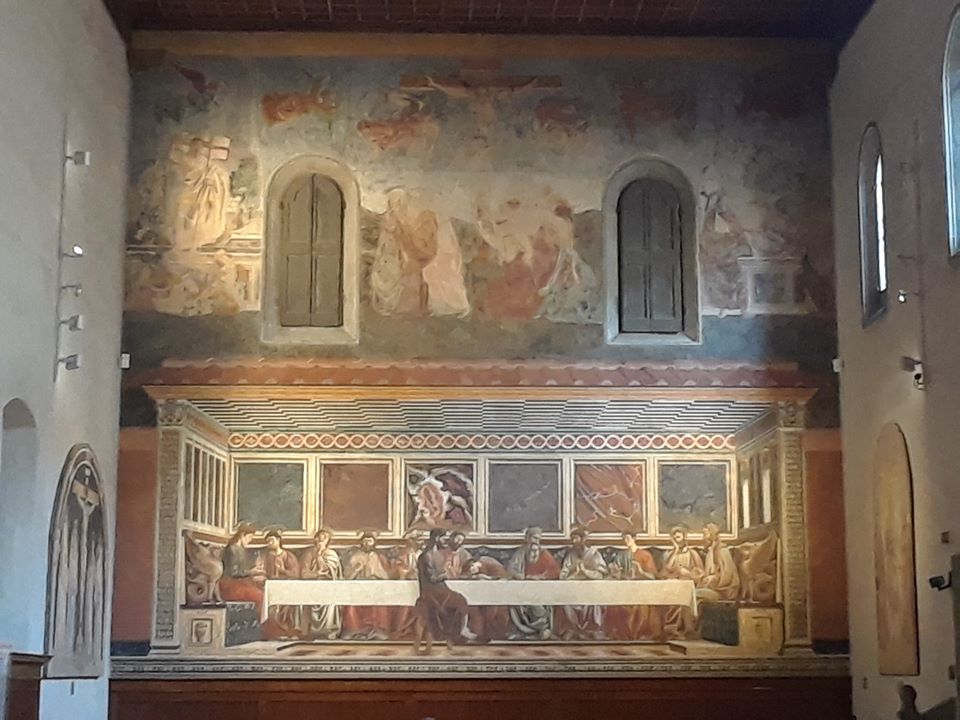
Refectory of the Chiesa di Sant Apollonia
Santa Maria Novella. The Basilica di Santa Maria Novella has two Last Supper paintings. Both are oil-on-canvas works. One is by Allesandro Allori (1535-1607) and the other by Plautilla Nelli (1524-1588). Allori’s canvas was created to be set into an older convent refectory fresco that was in need of restoration. The refectory frescoes were restored and, hence, Allori’s work is now offered separate from its original position inside the ancient fresco. The Last Supper of Plautilla Nelli painted in 1570 was being restored and will not be available until a later date. This is the only work that the artist signed. Plautilla Nelli was the very rare female artist. Her work is seen here in Santa Maria Novella, and in the Ufizzi Gallery, the Museo Nazionale di San Marco, the Andrea del Sarto Last Supper Museum of San Salvi, and in locations outside Florence. I have included her lovely Annuniciation which hangs in the Ufizzi.
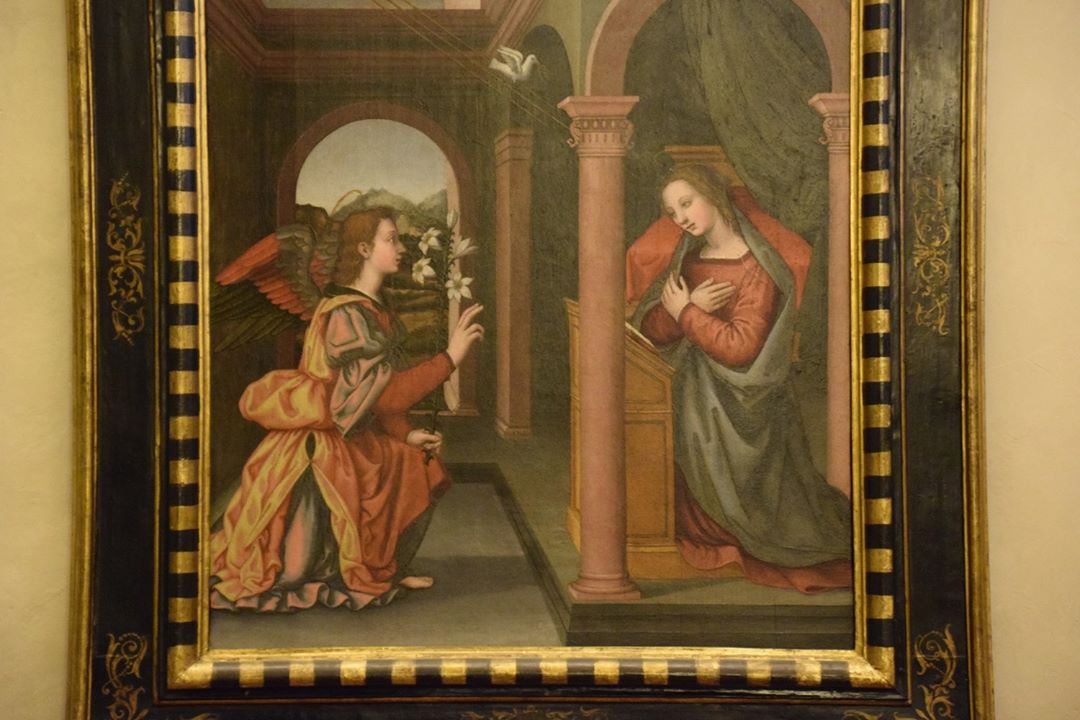
Florence – Uffizi Gallery – The Annunciation painting in 1550 by Plautilla Nelli
Sant’Ambrogio. The 10th-century church was built on the spot where its namesake Saint Ambrose – the beloved bishop of Milan – stayed in 393 AD. It has a pretty white façade and is located at Via Giosue’ Carducci, 1 – very close to Piazza Ghiberti where one finds the Mercato di Sant’Ambrogio.
San Marco. The refectory of the ancient convent of San Marco is now the gift shop and bookstore of the Museo di Nazionale di San Marco. The Last Supper painted by Domenico Ghirlandaio (1449-1494) in 1482 is gloriously available and fully restored in this incredible convent museum that costs a mere 4 Euro to visit. Getting to the Piazza San Marco where one finds the church and convent-museum (and the bus to Fiesole – a great day trip) is easy as it is a straight walk down Via Camilla Cavour from the Piazza del Duomo. Be sure to visit the dormitories of the monks that are all decorated with frescoes painted by Fra Angelico. You may notice the lack of blue paint commonly used for the Virgin Mary’s gown. There are only two paintings here with the expensive color made by crushing blue lapis lazuli – the crucifixion scene in the Sant’Antonino cloister and the paintings in the rooms of Cosimo de’ Medici – the patron who paid for the 1437 restoration of the convent. Cell 38 and 39 were the rooms set aside for Cosimo and in Cell 38 one finds the brilliant crucifixion of Fra Angelico (1395-1455).
-
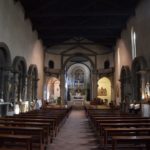
-
Sant’Ambrogio -The Last Supper located in the canopied apse to the left of the altar
-
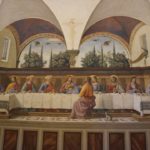
-
San Marco – The Last Supper painted in 1482 by Domenico Ghirlandaio
-
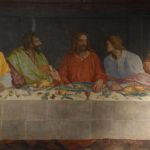
-
Santa Maria della Carmine – Last Supper painted in 1582 by Alessandro Allori
Santa Maria del Carmine. this church is not free to visit as it houses the famed 15th-century Cappella Brancacci, which, in itself, is astonishing. If you choose to visit and pay the 8 Euro entry fee then you can see the completely original and intact chapel and the beautiful Last Supper of Alessandro Allori (1535-1607) painted in 1582. To tempt you, I include a photo of the Brancacci Chapel. The chapel paintings were commissioned by the wealthy silk merchant Felice di Michele Brancacci (1382-1440). The chapel and cycle of paintings were begun in 1425 and finished in 1427. Brancacci hired Masolino da Panicale (1383-1447) as the maestro and he was assisted by his pupil Masaccio – (born Tommaso di Ser Giovanni di Simone in 1401, died in 1428). The works were completed by Filippino Lippi (1457-1504), the illegitimate son of the incomparable painter-monk Fra Filippo Lippi (1406-1469).
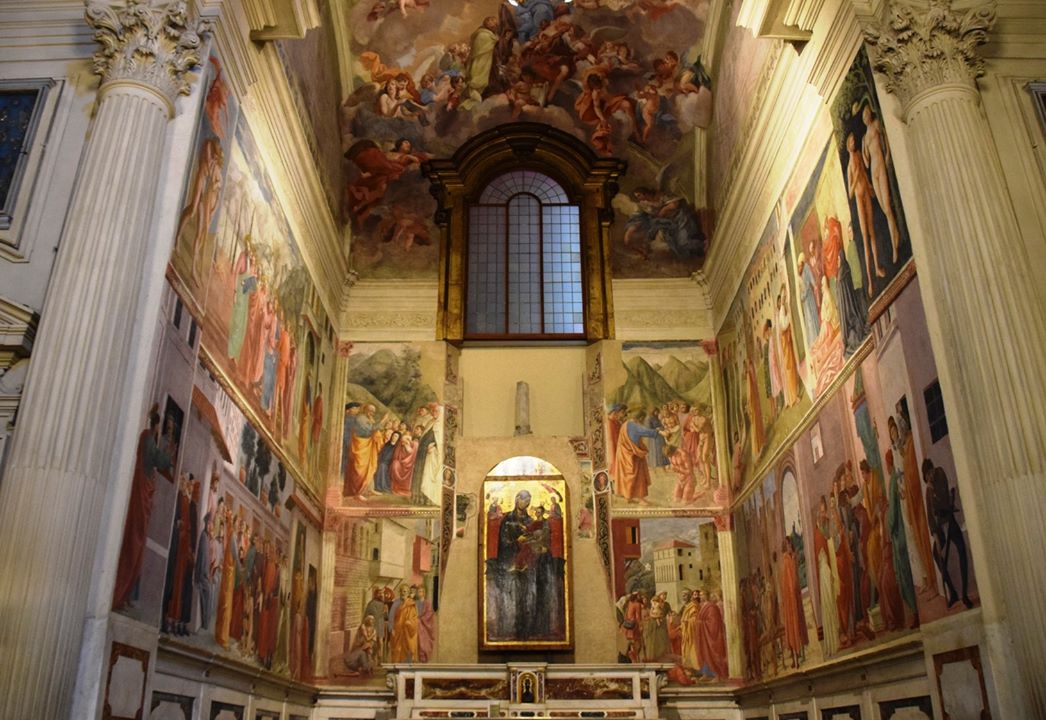
Chiesa di Santa Maria del Carmine – the Brancacci Chapel
Cenacolo della Calza. Although I did not succeed in seeing this particular fresco I mention it because the walk to the refectory is so delightful and includes a church on the way that has its own very famous Last Supper fresco. The Convento delle Calza is an Oltrarno location and a 15 minute walk from the Pitti Palace. It is to the left of the 13th-century walls and gate of the old Porta San Gattolino now called the Porta Romana. In front of the southernmost gate to Florence is the modern sculpture by Michelangelo Pistoletto (1933 – ), the Dietro-Front, Turnabout. This really wonderful and quirky sculpture of two women – one resting in a prone position the head of the other – took three years to accomplish, 1981-1984. I love it! The mix of the ancient and the modern that is so common in Italy is always a delight and one of the many reasons I keep coming back to this country!
To reach the Piazza delle Calza just walk past the Pitti Palace down Via Romana until you reach the conference center immediately before the gate to the city. The conference center owns the Cenacolo and they will allow you free access as long as there is no meeting in the room – a situation that is highly unlikely. You can call the conference center ahead and ask for access or just take a walk. This is a pretty street with lots of interesting shops.
-
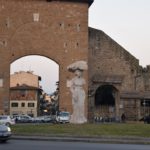
-
Porta Romana, Dietro-Front sculpture by Michelangelo Pistoletto
-
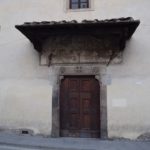
-
Convento delle Calza – old entrance
-
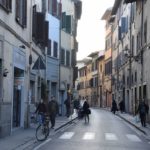
-
Florence – Oltrarno – Via Romana
There is a church on the way, Chiesa di San Felice in Piazza. Opened in 1066 it has some lovely artwork including a large painted crucifix by the workshop of Giotto di Bondone (1266-1337) and a Cenacolo painted in 1615 by Matteo Rosselli (1578-1650). The Last Supper of San Felice is not open to the public but booking ahead with a guide might give you access. The Cenacolo in the Convento della Calza was painted in 1514 by Franciabigio (1482-1525).
My wish for you is a trip to Florence, the city of lilies and the birthplace of the Renaissance! I hope you enjoyed my short narrative about the many things one can enjoy for free in the city that inspired Dante and nurtured the talents of Leonardo da Vinci and Michelangelo and that in its most celebrated eras hosted over one hundred active artists. Florence – Firenze – is still the beating heart of a people who continue to embrace their history and traditions while navigating and embracing modernity. Florence truly is a feast, a banquet you can enjoy with all your senses! Be sure to rub the nose of the piglet – Il Porcellino – to ensure you will return to this astonishing city!
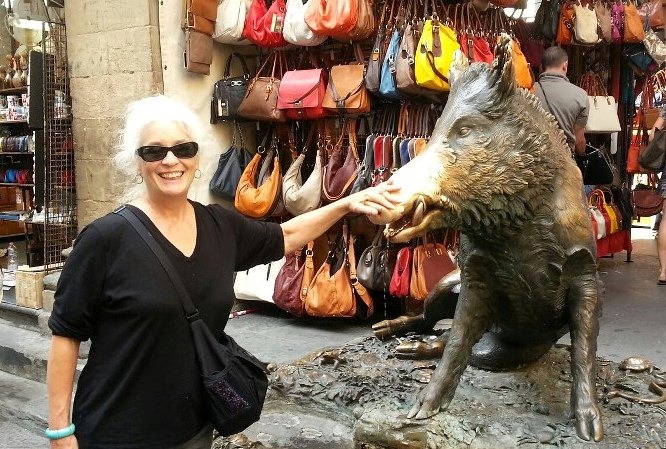
Il Porcellino – ensuring I return to the city!
Virginia Merlini

































